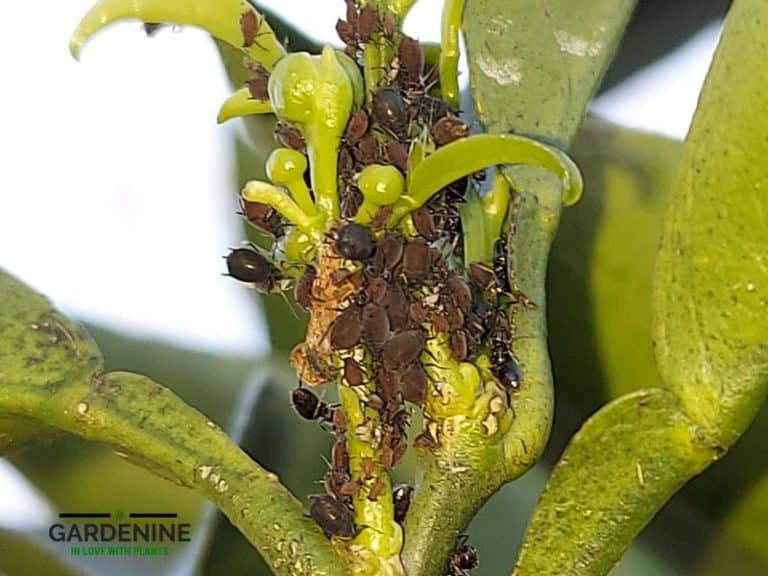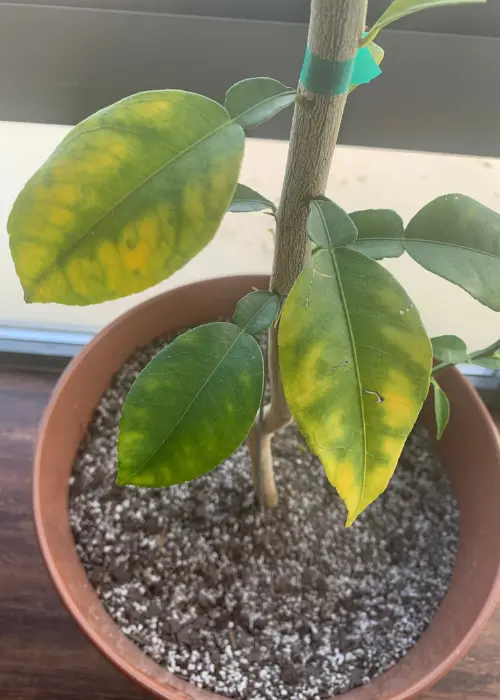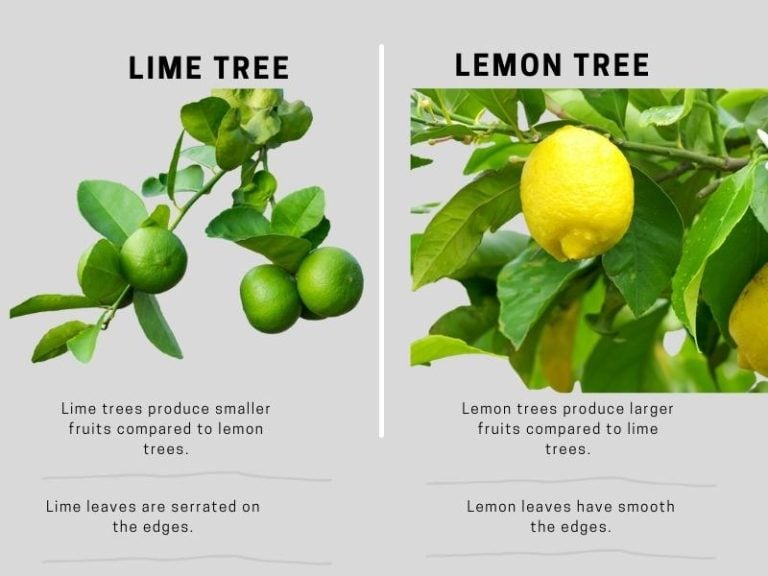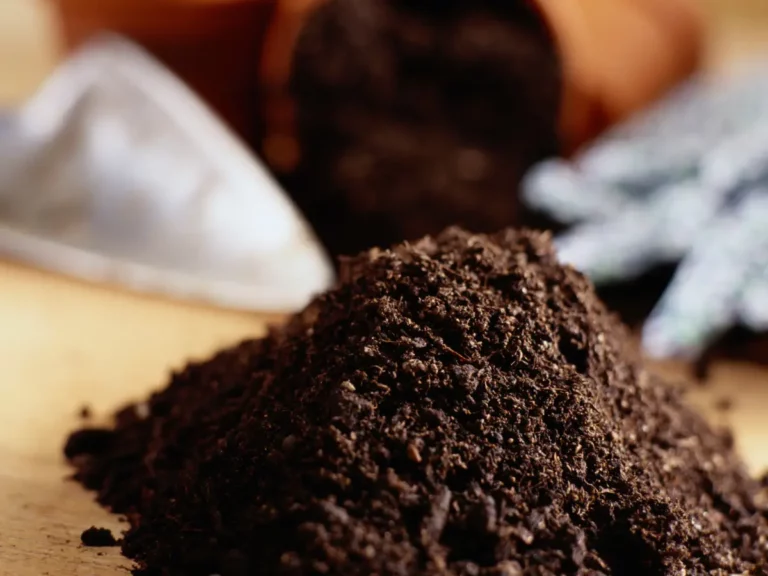Are Lemon Trees Self-Pollinating? All Pollination FAQ Answered
There is a reason why lemon trees grown in groves flourish more than when you decide to grow a single tree in your garden. However, most people often confuse this with needing more than one tree for pollination to occur.

Are lemon trees self-pollinating?
Yes! Lemon trees have flowers containing both male and female reproductive parts, which enables them to self-pollinate. Pollen from the tree’s own flowers can fertilize the ovary and set fruit without the need for cross-pollination.
Key takeaway:
Lemon trees can self-pollinate, meaning a single tree can fertilize itself using its own pollen. However, bees and other pollinator insects help transfer pollen from flower to flower. Therefore, for indoor lemon trees, hand pollination is highly recommended. For commercial lemon production, cross-pollination with a different lemon variety results in higher yields and better quality.
Pollinating indoor vs. outdoor lemon trees
You can leave outdoor lemon trees to self-fertilize and yield fruit as this is okay for hobby fruit growers in small backyard gardens. In orchard applications, the practice is different.
We often aim to increase productivity by cross-pollinating with pollen from a different variety. It is common practice for commercial fruit farmers to plant two varieties of lemon trees in close proximity, especially those that bloom at the same time.
The cross-pollination leads to a more uniform shape, better fruit fill, and higher yields. While self-pollination is possible, commercial lemon orchards rely on interplanting and pollinator insects to maximize cross-pollination for optimal fruit production.
How to hand-pollinate lemon trees
In most cases, insects such as bees pollinate lemon trees outdoors by buzzing from flower to flower, spreading pollen. However, when you have an indoor lemon tree, you must hand-pollinate it.
The process is not complicated, and I’ll show you how to do it.
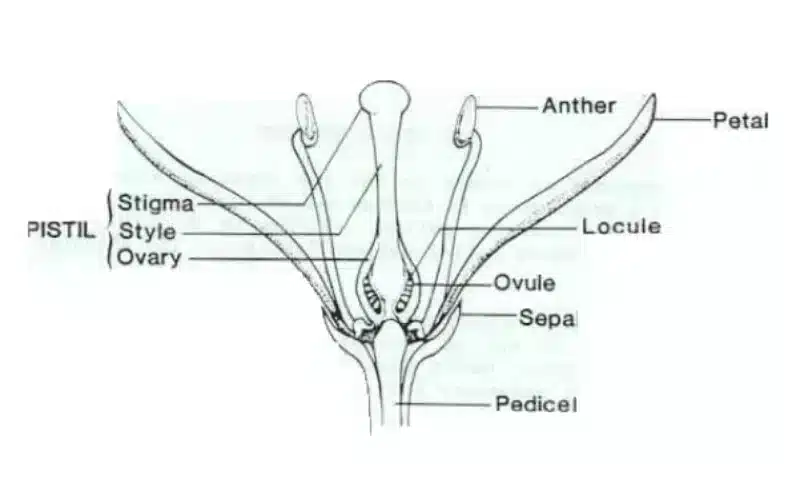
First, you need to be able to identify the reproductive parts of a lemon tree’s flower:
- Pistil – The female reproductive organ located in the center of the flower. It receives pollen during pollination. The pistil consists of the stigma, style, and ovary.
- Ovary – It is at the base of the pistil and contains the ovules or potential seeds. After fertilization by pollen, the ovary is the part that swells into the fruit.
- Stigma – The sticky top portion of the pistil that catches and holds pollen grains during pollination. It becomes sticky when ready to receive pollen.
- Style – The slender stalk that connects the stigma to the ovary. Allows pollen tubes to grow down to the ovary.
- Petal – Often brightly colored modified leaves that surround the reproductive parts of the flower. Most petals are brightly colored to attract pollinators naturally.
- Anther – This is part of the stamen, the male reproductive organ of the flower. Anthers produce pollen grains.
- Stamen – The stamen is the male part of the flower with slender filaments surrounding the pistil. When mature, the anthers will start producing pollen.
See the diagram 1(a).
Note that the pistil at the center of the flower has a swollen base and top. It is typically longer than the rest of the parts and turns sticky when opening up to pollen in the sack at the anthers’ top.
To pollinate the tree, simply transfer pollen from the anthers on one flower to the sticky stigma of another flower on the same tree. Here’s how:
Step 1: Collect pollen using a paintbrush or Q-tip
Use a paintbrush with a fine tip or cotton swab to collect pollen from the anthers —the longer and skinnier, the better. Lemon pollen is typically a bright yellow or pale yellow color.
Collect the mass of many tiny, bumpy, yellow-colored grains on top of anthers and ensure they’re visible on the paintbrush or Q-tip, whichever you’re using.
Be sure to get as much pollen onto the brush for maximum results.
Step 2: Lightly brush the pollen onto the stigma of another flower
Gently dab pollen onto the sticky stigma. Take your pollen-laden paintbrush and place it between the next flower’s leaves, brushing it against the stigma.
The pistil should feel sticky and should provide a surface for the pollen to adhere to. I like using a dry paintbrush as it gives me a long probe as well as a better surface for harvesting pollen and transferring it from one flower to another.
Step 3. Label hand-pollinated branches
Label the pollinated branches to avoid disturbing the flowers next time. To ensure maximum effect and quality pollination, I prefer hand-pollinating my indoor lemon trees at least once a day.
You may need to repeat for all receptive flowers, renewing pollen as needed.
As a precaution, refrain from washing the brush until you finish pollinating. There is no significant difference between pollen from different flowers of the same type of tree.
Here’s a video showing hand-pollination steps.
Gardener’s note: Remember, hand-pollination success depends on you identifying the different parts of the flower distinctively from the pistil, anthers, and stamen. These parts play a crucial role in the process, so you should make sure you can find and identify them with ease.
Increasing fruit yield
A mature lemon tree has both male and female parts that allow self-pollination to take place. When ready, the tree will produce yellow, powdery pollen that will fall on the stigma. If you notice several flowers blooming that fall off the branches instead of producing fruits, do not worry, as it is normal for some to be sterile.
However, the number of lemons produced yearly depends on the number of flowers blooming. A sign of successful pollination is when the flower closes on itself and begins to wilt.
Depending on the type and growing conditions, you may start to see fruits appearing on your lemon tree from 4 to 12 months.
To increase lemon production, we often apply a few measures that have worked for us in the Pacific Northwest:
- Companion planting compatible pollinator trees – Alternate rows or intersperse trees of complementary lemon types like Lisbon and Eureka is a proven way of promoting cross-pollination and can increase yield up to 20% versus growing a single variety.
- Use bee hives – Bring in managed honey bee or mason bee hives at a density of 2-4 hives per acre to increase pollinator activity and enhance pollen transfer. I recommend introducing hives before the first bloom, as this is when they’re most effective.
- Assist pollination – Hand pollination or the use of pollinating wands can ensure thorough flower pollination for the first critical flowers. I use this option to establish a strong fruit set early in single lemon trees in my backyard.
- Plant native flowering plants nearby – Intersperse lemon orchards with native wildflowers, and shrubs, that attract pollinators. A diverse ecosystem improves natural pollination.
- Avoid spraying insecticides at bloom time – Avoid insecticides during flowering as they can kill and discourage pollinators from your orchard.
These tricks should also work well for most self-pollinating fruit trees and most types of lemon hardy to USDA zone 9.
Can you cross-pollinate lemons with orange trees?
You can cross-pollinate lemon with orange trees as it does not affect the fruits; doing so will neither change the taste or appearance of the fruit. Those growing to be lemons will remain lemons and oranges will yield orange fruit.
But why are my oranges sour?
If your oranges taste sour, it is most likely due to insufficient minerals, heat, or being harvested too soon. However, if your plant was a cross between a lemon and an orange, having a different type of plant fertilize it may affect the outlook or flavor.
Cross-pollination will, however, improve the fruit set in parthenocarpic fruits (fruits that develop without pollination or fertilization).
However, for most lemon trees, studies have shown that most of their pollen is not viable for use, and those lemons that get pollinated by oranges experience an increased rate of early fruit drop.
If you aim to get a crossbreed of both types, you are better off getting a crossbreed plant or grafting.
Do lemon trees attract bees?
Lemon trees attract bees when in bloom. They bloom profusely for an extended period, offering bees a reliable seasonal source of nutrition. Flowers produce nectar, which bees seek out as food.
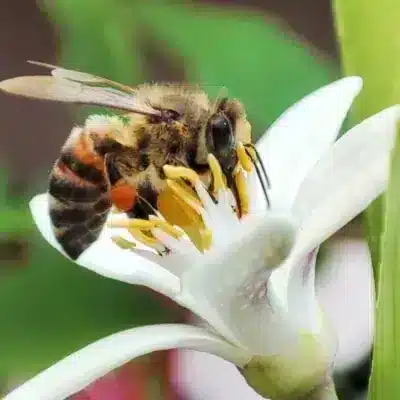
The bright flowers, too, attract bees and other pollinators. White petals of lemon flowers provide a stark contrast to the green foliage, making them highly visible. Bright colors attract pollinators.
Lemon flowers also have a sweet, citrusy fragrance that helps guide pollinators. Bees can detect floral scents from long distances.
Flower shape also plays a big role in attracting bees. The cup-shaped lemon blossoms, with numerous exposed reproductive parts, provide bees easy access to nectar and pollen grains.
Pollen sticks to the hairy bodies of bees, allowing them to transfer it from flower to flower.
However, while bees may help with pollination, they’re not needed for pollination to happen. As long as mature pollen falls on a ready stigma, your tree will do the rest and pollinate itself.
FAQ
Here are brief 50-word answers to the lemon tree pollination FAQs:
Why is my lemon tree flowering but no fruit?
Flower drop or lack of pollination often causes no fruit set; ensure proper watering, nutrition, light, and pollinator access during flowering.
Do I need to hand-pollinate my lemon tree?
Hand pollination is not required for outdoor lemon trees. However, if you’re growing your lemon trees indoors, you need to pollinate them by hand. Hand-pollination can supplement natural pollination but is not required for self-fertile varieties like lemons that can self-pollinate.
Do you need two Meyer lemon trees to pollinate?
No, Meyer lemons are self-fertile so a single tree can pollinate itself, but yield improves with a second pollinizer variety.
How do you tell a lemon flower is pollinated?
Signs of pollination are wilting petals, a swollen ovary at the flower’s base, and developing tiny green fruit behind the petals.
Can lemon and lime cross-pollinate?
Yes, lemons and limes can cross-pollinate. Though different citrus species, lemon and lime trees have overlapping bloom periods allowing pollen transfer.
Further reading
- How to identify common lemon tree pests
- Why are the leaves of my lemon tree sticky?
- Why are Lemon Tree Leaves Falling Off?
- What is the best soil for lemon trees?
Conclusion
So, in conclusion, lemon trees can self-pollinate, but cross-pollination boosts the quality and quantity of the fruit yield.


